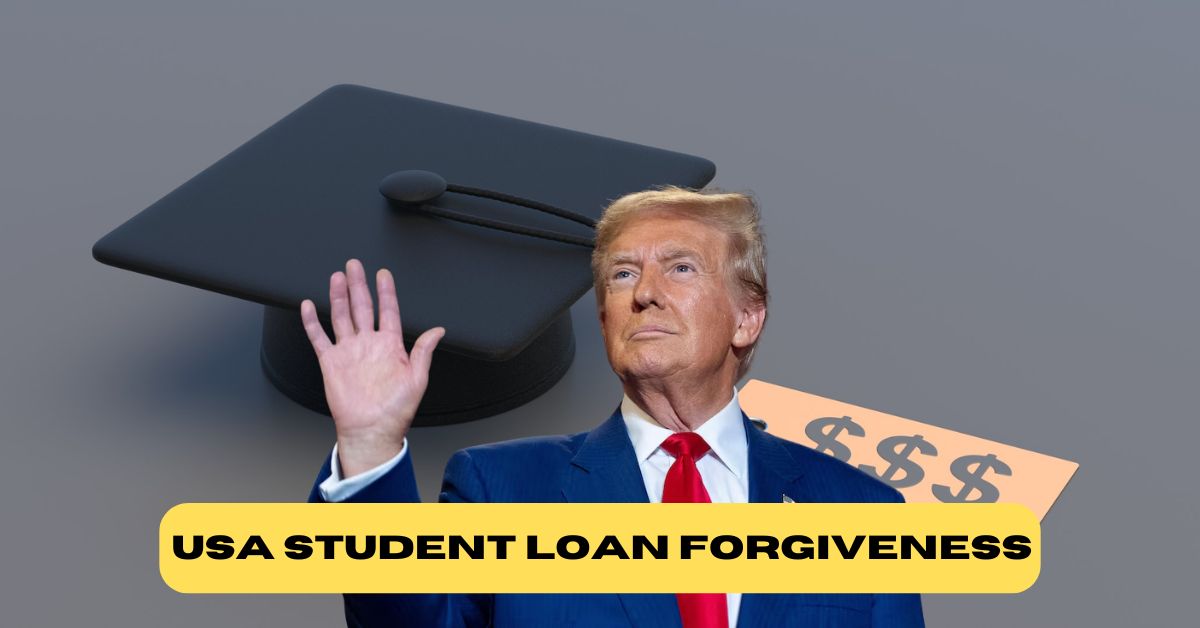Student loan debt in the United States has ballooned to $1.7 trillion, affecting over 45 million borrowers. With college tuition rising nearly eight times faster than wages, managing student loans has become increasingly challenging for many. In response, the U.S. government has introduced several student loan forgiveness programs aimed at alleviating this financial burden and helping borrowers regain stability. These programs offer targeted relief, enabling eligible individuals to reduce or eliminate their student loan debt and focus on personal and professional growth.
Types of Student Loan Forgiveness Programs
The federal government provides various student loan forgiveness options tailored to specific groups, such as public service employees, teachers, low-income borrowers, and victims of educational fraud. Below is an overview of the most prominent programs:
1. Public Service Loan Forgiveness (PSLF)
PSLF is designed for borrowers employed in public service roles, such as government jobs or qualifying non-profit organizations. To qualify, borrowers must make 120 qualifying monthly payments under an Income-Driven Repayment (IDR) plan while working full-time for a qualifying employer.
- Eligibility: Full-time employment with a government or eligible non-profit organization.
- Loan Type: Only Direct Loans qualify.
- Payment Plan: Must be enrolled in an IDR plan.
- Qualifying Payments: 120 qualifying payments (not required to be consecutive).
- Documentation: Annual Employer Certification Form to verify eligibility.
2. Income-Driven Repayment (IDR) Forgiveness
IDR Forgiveness offers relief to borrowers whose income is insufficient for standard loan payments. Monthly payments are based on a percentage of discretionary income, and any remaining loan balance is forgiven after 20 or 25 years of qualifying payments.
- IDR Plans:
- PAYE: 10% of discretionary income, forgiveness after 20 years.
- REPAYE: 10% of discretionary income, forgiveness after 20-25 years.
- IBR: 10-15% of discretionary income, forgiveness after 20-25 years.
- ICR: 20% of discretionary income or fixed 12-year payment, forgiveness after 25 years.
3. Teacher Loan Forgiveness
Teachers in low-income schools may qualify for up to $17,500 in loan forgiveness after five consecutive years of full-time teaching.
- Eligibility: Full-time teaching in a low-income school for five consecutive years.
- Loan Type: Direct Loans or FFEL Loans.
- Subjects: Priority for teachers in Mathematics, Science, and Special Education.
- Note: Cannot combine with PSLF for the same period of service.
4. Borrower Defense to Repayment
This program applies to borrowers misled by their school or those who attended institutions engaging in fraudulent practices. Borrowers can have their loans discharged if they prove school misconduct.
- Eligibility: Evidence of fraud or misconduct by the school.
- Loan Type: Direct Loans or consolidated loans.
- Forgiveness Timeline: Varies based on investigation outcomes.
Eligibility Criteria for Student Loan Forgiveness
Eligibility varies by program and borrower circumstances:
- PSLF: Requires 120 qualifying payments under an IDR plan and full-time employment with a qualifying organization.
- IDR Forgiveness: Requires enrollment in an IDR plan with 20-25 years of qualifying payments.
- Teacher Loan Forgiveness: Requires five consecutive years of full-time teaching in a low-income school.
- Borrower Defense: Requires proof of school misconduct, applicable only to Direct Loans.
Application Process for Student Loan Forgiveness
Applying for student loan forgiveness involves several critical steps:
- Identify the Correct Program: Review employment, income, and loan type to choose the appropriate forgiveness program.
- Verify Loan Type and Employment: Ensure loan eligibility (e.g., PSLF applies only to Direct Loans).
- Complete Required Documentation: Gather necessary documents such as income proof, employment certification, or evidence of school fraud.
- Submit Application: Applications can typically be submitted via the Federal Student Aid website. For PSLF, submit Employer Certification Forms annually.
- Follow Up: Regularly monitor your Federal Student Aid account to track application status.
Documentation Checklist
Depending on the forgiveness program, required documents may include:
- Employment Verification Forms: For PSLF and Teacher Loan Forgiveness.
- Income Documentation: For IDR plans.
- Consolidation Application: If needed to qualify loans.
- Supporting Evidence: For Borrower Defense, provide proof of school misconduct.
Conclusion
Student loan forgiveness programs are invaluable for borrowers struggling with educational debt. Understanding the available forgiveness options, eligibility criteria, and application processes can help borrowers strategically reduce or eliminate their student loan obligations. Whether you work in public service, teach in a low-income school, face financial hardship, or have been a victim of educational fraud, these programs offer a path to financial freedom. Success requires careful adherence to guidelines, timely submission of required documents, and diligent tracking of application progress.
Manish Kumar is a seasoned journalist and the Senior Editor at NewIndiaNetwork.com, with over a decade of experience in uncovering stories that matter. A leader both in the newsroom and beyond, he thrives on guiding his team to deliver impactful, thought-provoking content. When he’s not shaping headlines, you can find him sharing his insights on Twitter @humanish95 or connecting via email at manishdhanda60@gmail.com.
